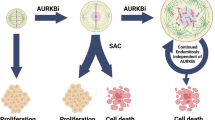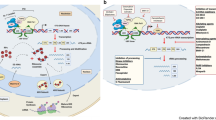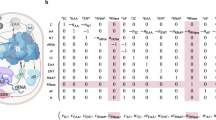Abstract
THE maturation of the mammalian erythroid cell is marked by loss of the ability to synthesize protein1. The predominant site of protein synthesis within the cell is the polyribosome, an aggregate of two or more single ribosomes2. Although the decline in protein synthesis which accompanies erythroid maturation is apparently related both to a reduction in the cell content of polyribosomes and to a decrease in their functional capacity3–6, there has been disagreement over the rates of polyribosome and single ribosome disappearance. It has been claimed, on the basis of in vitro3 and in vivo5,6 investigations, that erythroid maturation is accompanied by a selective loss of heavier polyribosomes, which results in an increasing proportion of smaller aggregates and single ribosomes as the reticulocyte ages. Other investigations have shown that there is a relatively constant proportion of polyribosomes in reticulocytes of different ages4,7. We have developed a system which allows longitudinal investigation of a population of reticulocytes as they mature in vivo, unaffected by continued production of new erythroid cells. Investigations of ribosome behaviour in this system indicate that with maturation all classes of ribosomes disappear at proportional rates, and that in particular-there is no orderly shift of polyribosomes from larger to smaller aggregates.
This is a preview of subscription content, access via your institution
Access options
Subscribe to this journal
Receive 51 print issues and online access
$199.00 per year
only $3.90 per issue
Buy this article
- Purchase on SpringerLink
- Instant access to full article PDF
Prices may be subject to local taxes which are calculated during checkout
Similar content being viewed by others
References
Holloway, B. W., and Ripley, S. H., J. Biol. Chem., 196, 695 (1952).
Marks, P. A., Burka, E. R., and Schlessinger, D., Proc. U.S. Nat. Acad. Sci., 48, 2163 (1962).
Marks, P. A., Rifkind, R. A., and Danon, D., Proc. U.S. Nat. Acad. Sci., 50, 336 (1963): Rifkind, R. A., Danon, D., and Marks, P. A., J. Cell. Biol., 22, 599 (1964).
Glowacki, E. R., and Millette, R. L., J. Mol. Biol., 11, 116 (1965).
Rowley, P. T., Nature, 208, 244 (1965).
Danon, D., Zehavi-Wilner, T., and Berman, G. R., U.S. Nat. Acad. Sci., 54, 873 (1965).
Mathias, A. P., Williamson, R., Huxley, H. E., and Page, S., J. Mol. Biol., 9, 154 (1964).
Millette, R. L., and Glowacki, E. R., Nature, 204, 1207 (1964).
Laszlo, J., Miller, D. S., McCarty, K. S., and Hochstein, P., Science, 151, 1007 (1966).
Marks, P. A., Burka, E. R., Conconi, F. M., Perl, W., and Rifkind, R. A., Proc. U.S. Nat. Acad. Sci., 53, 1437 (1965).
Author information
Authors and Affiliations
Rights and permissions
About this article
Cite this article
BURKA, E., DEBELLIS, R. Ribosome and Polyribosome Disappearance during in vivo Erythroid Maturation. Nature 213, 724–726 (1967). https://doi.org/10.1038/213724a0
Issue date:
DOI: https://doi.org/10.1038/213724a0



